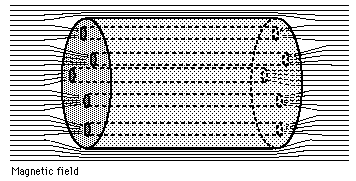Huge Distant Quasar Decreases it's Luminosity Factor Six to Seven Times in Only Two Years
LaMassa says "This is like a dimmer switch, and the power source just went dim." "Catching a quasar as it changes in a human lifetime is amazing." "I'm not sure at what level we might expect the activity to die out at, whether it be with a bang or with a whimper." (Their powerful whimpering quasar story)
Large and distant quasars would not change their brightness in our lifetime. This contradicts beginning level teachings in astronomy. Halton Arp and his followers must be correct, in that quasars are not distant objects, and that the quasar redshift interpretations for the expansion of the universe is altogether wrong. There is no way that quasar redshifts are a reliable indicator of distance, when their luminosity can dramatically change in merely a few years. And if galaxies shut down too, like they say, then standard candles are flickering in brightness and also unreliable indicators of distance.
Urry said "there is the chance the quasar may fire up again, showing yet another changing look."
It seems very likely that many, if not most quasars, actually change their brightness with respect to earth in a matter of decades or centuries. This is only the first such detection of many more years to come.
Scientists use a fantasy like magical environment to exist just outside and near an unseen theoretical black hole, to explain away the presence of photons, as a ludicrous explaination.
A changing face on alignment with earth of NGC 2617
J0159+0033 is the first changing face quasar discovered. Other examples of changing face galaxies include Mrk 590, Mrk 1018, NGC 7603, NGC 2617, NGC 7582, and NGC 1097.
NGC 2617 is a changing face AGN, that changed into a different seyfert galaxy type classification in less than 10 years. NGC 2617 is 62 Mpc distant.A changing face on alignment with earth of NGC 2617
NGC 2617 Flare up with video by Ohio State
Mrk 590 is a changing face AGN that is aligned face on with respect to earth.
Quasars are points of light that appear like stars in our own galaxy
Quasar PG 0052+251 and it's host galaxy
Sun's equatorial plasma torus photographed by Soho
Galaxy equatorial plasma torus
Superluminal quasar light? Explainable as nearby smaller sized microquasars.







































.jpg.png)










Present day cosmology models are all invalidated if it is accepted that from outside of Earths atmosphere nothing at all can be seen or photographed by conventional cameras, which was proved by the Apollo missions. Even our Sun was not visible to the Apollo crews while in cislunar space.
ReplyDeleteRespect and I have a super offer you: How Much Budget For House Renovation interior home remodeling
ReplyDelete